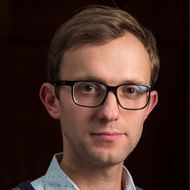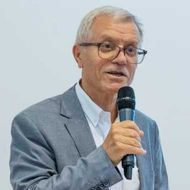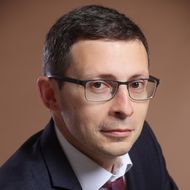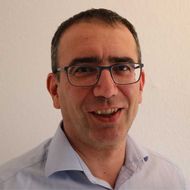Measuring Science: a New Look from Vienna
Is big data going to replace conventional statistical observations of the science, technology, and innovation sphere? Participants of workshops hosted by the ISSEK and a number of partner research centres in Austria and Germany in Vienna on 6–7 March agreed that the role of statistics is only going to increase. The experts outlined the potential for cooperation in the scope of S&T research projects and educational programmes.
During the few days in Vienna the ISSEK team held a series of workshops with representatives of leading Austrian think tanks such as Joanneum Research, the Austrian Institute of Technology, and the Centre for Social Innovation, and members of the German Leibniz Centre for European Economic Research ZEW.
The ISSEK Team


The Russian experts and their Austrian and German colleagues presented the main areas of their work and the key projects being implemented by their organisations; discussed new tools for studying the science, technology and innovation sphere, conducting foresight studies, and assessing government policies on the basis of big data analysis. The participants of the Vienna workshops considered various prospective approaches to more efficiently collecting particular types of data, and building specific statistical indicators. In particular, reports by HSE and the ZEW Centre staff members reflected their recent joint contribution to revising the Oslo Manual — the international OECD/Eurostat standard for statistical measurement of innovation activities.
Austrian experts (known for their research in assessing S&T policy) showed keen interest in the results of the ISSEK project on measuring business climate in the R&D sector (Doing Science). The readers may remember that it was aimed at identifying, through business tendency surveys, averaged-out opinions of R&D organisations’ and universities’ managers about the current state and development prospects of the sector, and their assessment of relevant government policies.
The Austrian colleagues pay particular attention to studying, and promoting development of research infrastructure (e.g. they maintain the RISIS database of European universities), and measuring research productivity. The ISSEK implemented a number of important projects in this field in recent years, related to studying best practices of managing research and innovation activities at R&D organisations and universities; assessing effectiveness of public expenditures on research and development; comparative analysis of S&T policy agendas in Russia and other countries, in particular cluster and regional innovation policies.
A specific topic of the discussions was applying semantic analysis of big data to measure research and advanced technology development. Statistics can produce a standardised, but frequently delayed understanding of knowledge creation processes, its accumulation and transformation into new technologies and products. This means that the time required to build indicators works against the analysts; as a result, decision-makers have to either make do with 'past due date' information, or use abstract visions presented in reports by professional consultants. This problem is further aggravated when the object of measurement is new technologies capable of transforming whole sectors of the economy in foreseeable future, disrupting the established order of everyday life. Plus, the actual object of the study is often missed altogether because it doesn’t fit into any of the existing analytical frameworks.
Big data mining opens opportunities for merging information from different sources, and quickly creating specific fragments of the overall image. Furthermore, advanced semantic analysis and machine learning techniques make it possible to construct new meanings, view technology development processes in a wider context which defines their emergence and dissemination. The main functionality of the intelligent big data mining system iFORA designed by the ISSEK was demonstrated at the workshop, along with certain results obtained using it, in particular to study technology life cycles, from development to mass application in the economy.
HSE long-term S&T foresight projects are increasingly focused on identification of priority areas, and their acceptance by the society. Experts from the Austrian Centre for Social Innovations shared their experience in conducting such studies.
On the basis of the workshops’ results the participants agreed several formats for future partnerships, including joint publications, personnel exchanges, guest lectures and conferences, and outlined possible areas for using the iFORA system in joint research projects.
Vitaliy Roud
Konstantin Fursov





